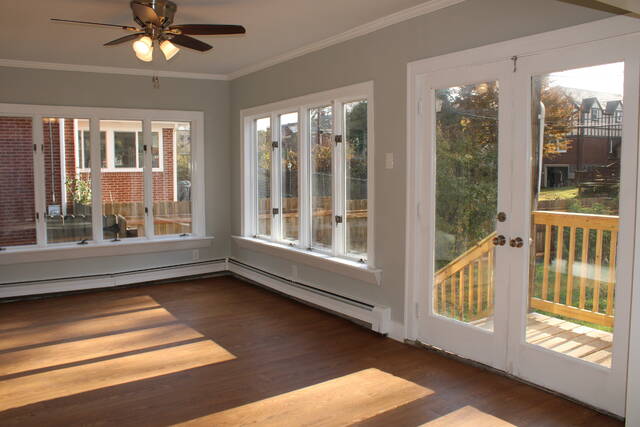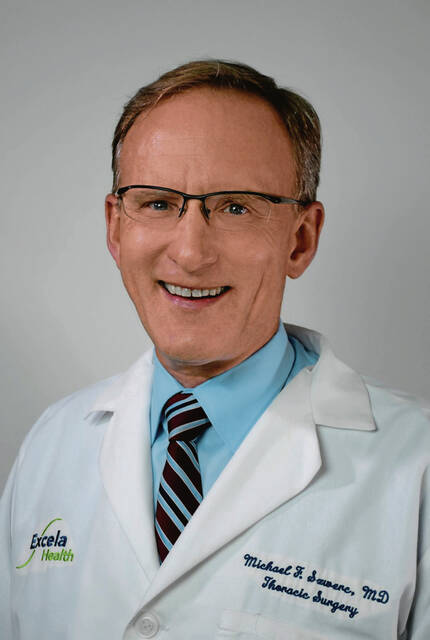Knee replacements have become one of the most common joint replacement surgeries over the last several decades. Normal wear and tear of the knee can result in nagging pain from the worn-out joints, often needing replacement with an artificial joint made of metal or plastic. The artificial joint functions like a normal healthy joint, allowing the patient to move through life without pain.
Dr. Brian Moore is an orthopedic surgeon with Allegheny Health Network who specializes in knee replacements. Under his direction, AHN recently became the first health care provider in the region to offer patients outpatient knee replacement at a stand-alone community ambulatory surgery facility — the AHN Monroeville Surgery Center. Patients are able to go home the same day as their procedure.
What is the difference between a partial knee replacement versus a total knee replacement?
A total knee replacement removes arthritis and replaces the joint surface of the entire knee joint. A partial knee replacement is a procedure that addresses or replaces arthritis in the knee when it is confined to only one portion or compartment of the knee. Not all patients with knee arthritis qualify for partial knee surgery and may be best treated with a total knee replacement depending on their surgeon’s recommendation.
How common is knee replacement surgery?
It’s one of the most common orthopedic procedures, with over 700,000 total knee replacements performed per year in the United States.
What are the benefits of outpatient knee replacement surgery?
By having this procedure done at our outpatient surgery center in Monroeville, we’ve seen greater satisfaction rates from patients who access and navigate through our center for their care with little stress or inconvenience, then go home and recover the same day as their surgery. Studies have also shown there is a lower risk for infection and a quicker return to normal activities among patients who opt for the surgery in an outpatient facility.
What types of patients are eligible for outpatient knee replacement surgery?
Overall, the patient must be in good health with no major underlying uncontrolled health conditions. They also need to have an optimal recovery environment at home to be eligible for outpatient surgery with an in-home caregiver available. This can be a spouse, partner, family member or friend to assist them through the recovery process. We will evaluate the home recovery environment prior to arranging for the surgery to ensure the patient can recover properly.
What does the recovery process look like after a knee replacement surgery?
Typically, the patient has surgery in the morning at the surgery center, and they are discharged several hours later. The therapy team plans to meet them at their house upon arrival and will then return several times over the following two weeks to ensure the patient is safely recovering and able to perform their post-operative rehab and exercises.
Patients do have the option to opt out of any home services if they would prefer to have no visitors to their homes. The patient then returns to our outpatient clinic at two weeks for their first post-op visit and the need for further physical therapy is assessed.
Some patients may require outpatient physical therapy while others may qualify for self-guided exercises. In general, the patient will be 90% to 95% recovered by six to eight weeks. Patients also receive a comprehensive multimodal pain control regiment that can involve perioperative nerve blocks, anti-inflammatory medication and/or pain medication.








